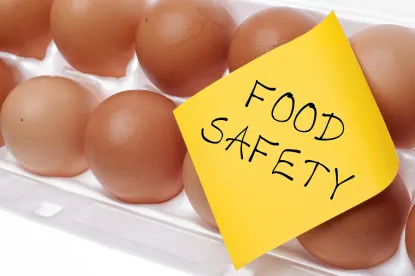As part of its implementation of the Food Safety Modernization Act, the FDA two years ago published a final rule titled, “Mitigation Strategies to Protect Against Intentional Adulteration.” Recently, the FDA issued the first installment of what it states will be a three-part guidance document on the rule. Comments are due on Dec. 17, 2018.
The term “intentional adulteration” (IA) broadly refers to several types of acts, including:
-
acts intended to cause wide scale public health harm, such as acts of terrorism focused on the food supply
-
acts of disgruntled employees, consumers, or competitors; and
-
economically motivated adulteration (EMA)
Acts intended to cause wide scale public health harm are associated with intent to cause significant human morbidity and mortality. The guidance states that the other forms of adulteration are typically intended to attack the reputation of a company or to obtain economic gain; thus, attacks intended to cause wide scale public health harm to humans are ranked as the highest risk and the IA rule is focused on addressing those acts and not acts of disgruntled employees, consumers, or competitors, or acts of EMA.
According to the guidance, the IA rule applies to the owner, operator, or agent in charge of a domestic or foreign food facility that manufactures/processes, packs, or holds food for consumption in the United States and is required to register under Section 415 of the Food, Drug & Cosmetic Act, unless one of several exemptions provided in the regulations applies.
The guidance seeks to help regulated food companies develop and implement a food defense plan (FDP) in accordance with the IA rule’s requirements by providing information on the following topics:
-
The components of an FDP and the importance of each component
-
How to conduct a vulnerability assessment to identify significant vulnerabilities and actionable process steps
-
How to identify and implement mitigation strategies for the actionable process steps associated with a facility’s processes
-
How to identify and apply the mitigation strategies management components (i.e., food defense monitoring, food defense corrective actions, and food defense verification)
-
The re-analysis requirements associated with the FDP
-
The education, training, and/or experience required for individuals who perform certain activities
-
The recordkeeping requirements associated with the FDP and implementation of the FDP
As always, the FDA’s guidance documents do not establish legally enforceable responsibilities, but rather describe the FDA’s current thinking on a topic.




 />i
/>i
